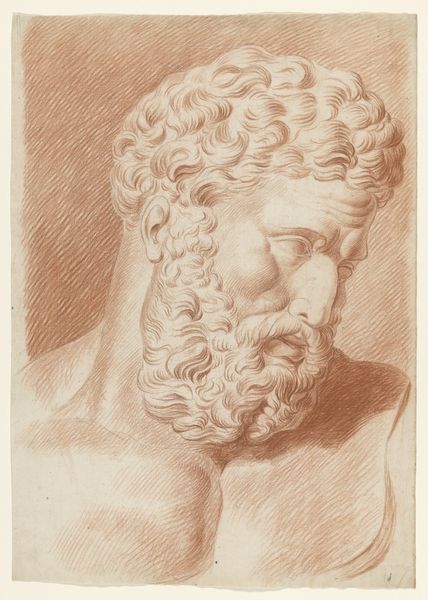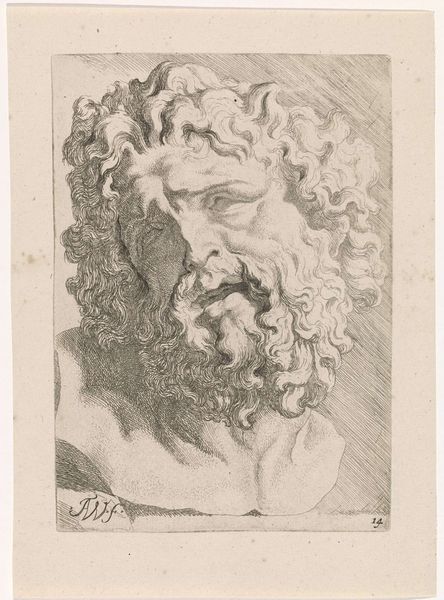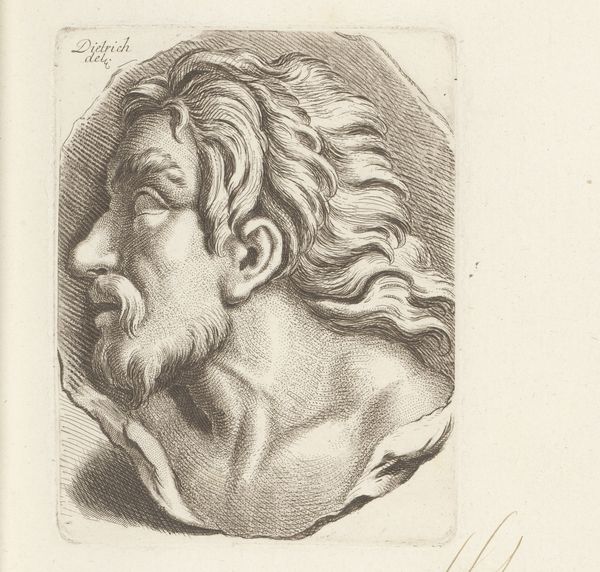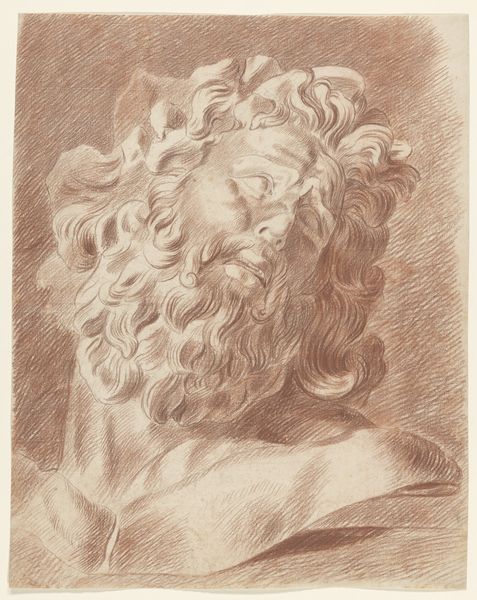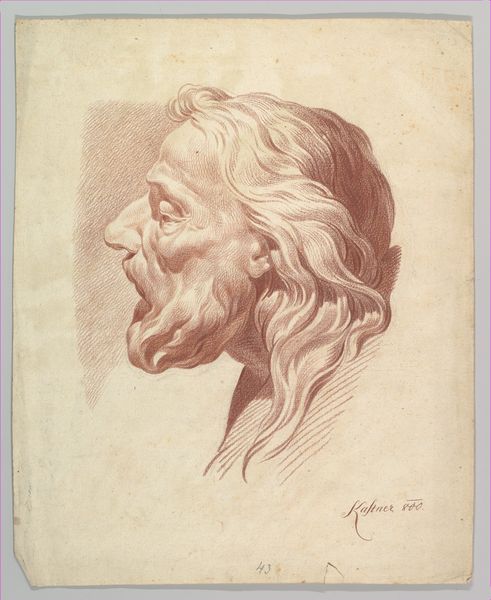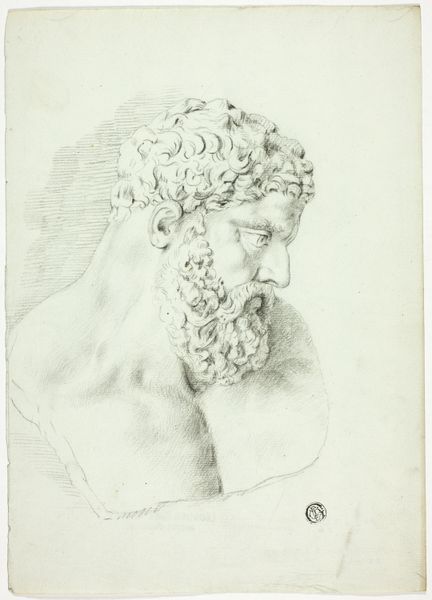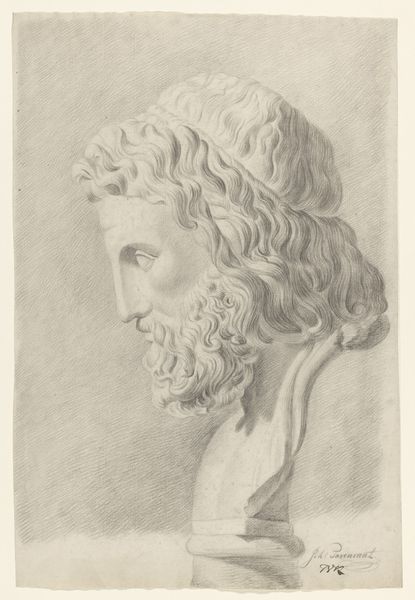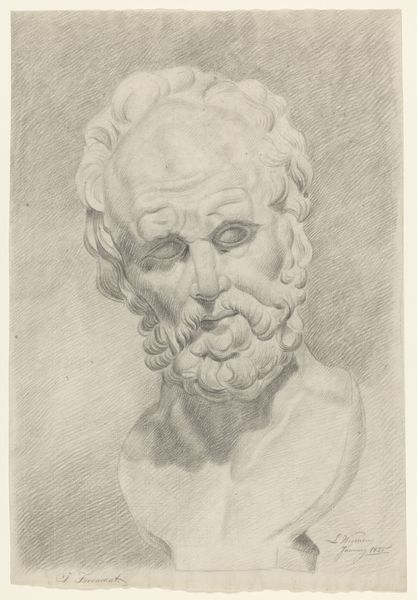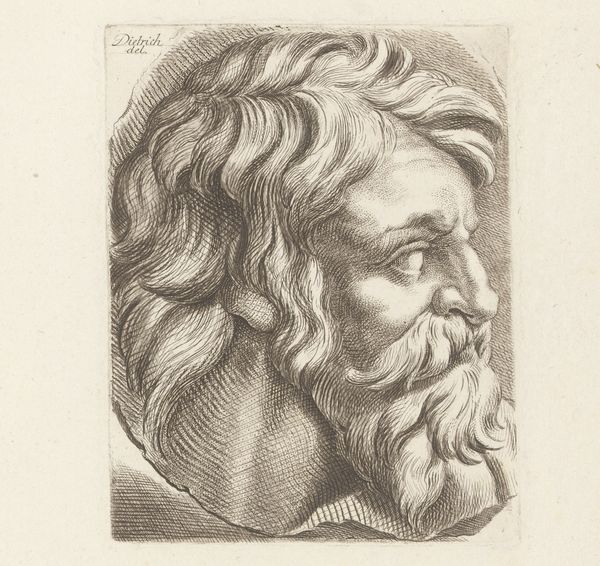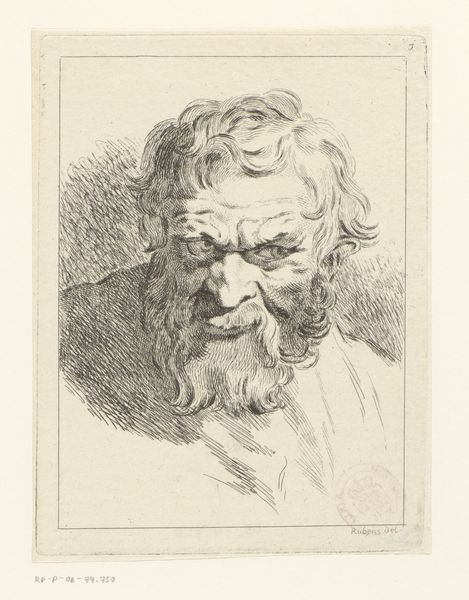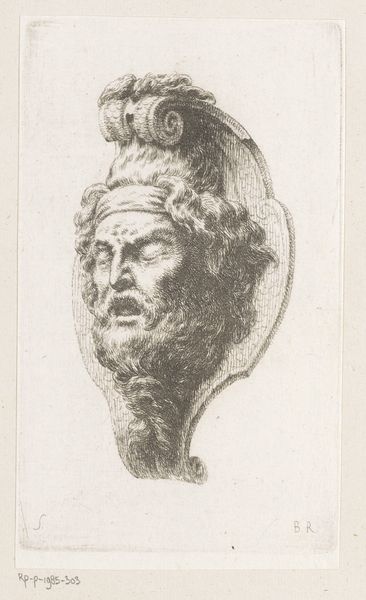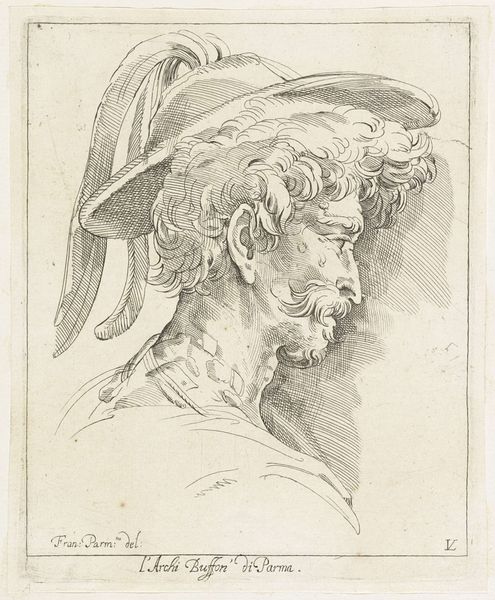
drawing, pencil
#
portrait
#
pencil drawn
#
drawing
#
neoclacissism
#
greek-and-roman-art
#
classical-realism
#
charcoal drawing
#
pencil drawing
#
pencil
#
history-painting
#
academic-art
Dimensions: height 545 mm, width 425 mm
Copyright: Rijks Museum: Open Domain
Curator: This pencil drawing is titled "Head of Laocoön" and was created between 1820 and 1833 by Jean Augustin Daiwaille. The Rijksmuseum is fortunate to have it in their collection. Editor: There's an intense quiet to this. The tight hatching and stippling used to build form are extraordinary. But his half-closed eyes give me such a heavy sense of dread and foreboding. Curator: Indeed, the Laocoön is an iconic figure, deeply embedded in Western art. He was a Trojan priest who warned against bringing the wooden horse into Troy. The gods, siding with the Greeks, sent serpents to silence him and his sons. It’s an agonizing death. Considering the rise of Neoclassicism, the intense interest in antiquity, we might also see it as a commentary on revolutionary fervor suppressed. Editor: I see the torment reflected in his features, especially the writhing mouth and furrowed brow. Daiwaille masterfully captured a frozen moment of mortal struggle. The image certainly speaks to something deep in the cultural memory of pain and warning. Is he warning us, or just experiencing his own fate? Curator: It also is compelling to see it simply as an artistic exercise. The drama is palpable, but this image could very well have been the study of form itself, a way to look back at Greek antiquity through a nineteenth-century lens and through the formal lens of neoclassicism. There’s an echo of Enlightenment ideals here. The appeal to reason is a stark contrast to what Laocoon represents: irrational fate and doom. Editor: I find myself returning to those eyes. Half-closed, seeing something we don’t, carrying burdens across centuries of artistic interpretation. He embodies a shared history of suffering. Even if rendered as an exercise, the resonance is undeniable. Curator: I agree. Ultimately, I believe "Head of Laocoön" demonstrates how intertwined art, history, and human experience truly are, both for the artist who created it, and the viewer today. Editor: And reminds us how art, even in its stillness, carries echoes of life’s enduring dramas and their archetypes.
Comments
No comments
Be the first to comment and join the conversation on the ultimate creative platform.
